POSTS
How to Prepare Coffee
Degrease the censer, for I’m about tread on hallowed ground. Today I tackle how to most effectively prepare coffee for human consumption.
“OMG”, you’re saying, “hasn’t that been laid to rest?” You snort and adjust your sleeve for dramatic effect before continuing, “the best technique—hands down—has clearly been proven to be X.” Where “X” is shorthand for your interminable ramble on flat burr grinders, grind densities, solubles concentration, solubles yield, and brewing time. Not to mention water temperature, brew volume, conical filter sections, and metastatic percolation.
You weave a complicated and expensive tapestry of coffee-making equipment, carefully extolling the virtues of glassware, cork, and copper tubing for solubles extraction. After all, you’re an expert on coffee and you know that it can be palatably brewed only using equipment as complicated and Italian as the engine of a Ferrari.
Then you reveal your twist. “But you don’t actually need all that fancy equipment if you know a little science.” And with unrelenting, Amway resolve, you proceed to explain how Stanford lecturer Alan Adler, inventor of the AEROBIE® flying ring, will free us from the leather-clad shackles of Italian craftsmanship for the low, low price of just $39.99.
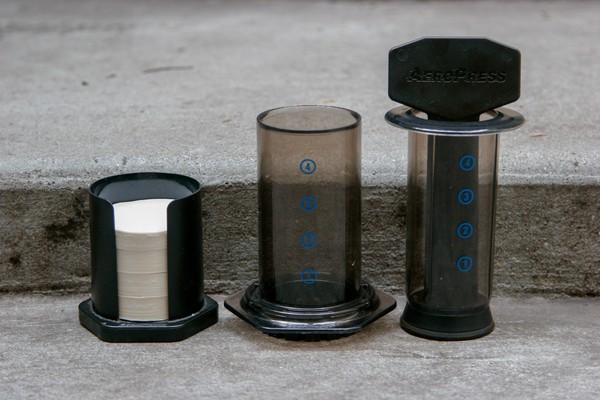
And you produce a graph. You carry it everywhere with you. It’s printed on laminated, heavy stock.

From your double-breasted sleeve, you’ve drawn a collapsible pointer, de-collapsed it, and you’re now thwacking at the graph. “You see,” you continue, “you can simply combine the Adler AeroPress® with an understanding of the proper brewing ratio [thwack] and how it relates to strength [thwack] and extraction [thwack] as expressed by blah blah something [thwack thwack thwack].” My head’s nodding to the thwacks, but I’ve stopped listening.
I’m aware of the AeroPress®. I’ve been using them at my restaurants for a long time. So long, in fact, that I still have the original light blue plastic models that look a bit like medical specimen cups.
It’s true that they’re much cheaper than the Ferrari-engine-style steampunk monstrosities and it’s true that they’re just as effective at brewing a reasonable cup of coffee; however, the scientific process requires too much math for my baristas. They just don’t have time to perform multivariate statistics and Fourier transforms—fast or otherwise—for each cup they brew. So I decided to look for an improvement upon the AeroPress®. I needed something fast, cheap, and easy that delivered the caffeinated experience my patrons crave. After some soul searching in dubious alleyways, I’m happy to say that I’ve found it.
Allow me to share with you my new, perfect method for preparing coffee.
Begin by liberating a small piece of copper scouring pad. Use tin snips or scissors that you’re willing to dull. The size of the piece isn’t critical, but it should comfortably fit between your thumb and index finger. Remove any small, dangling copper bits and hold the piece of scouring pad in an open flame until it glows red and smokes. This burns off any coatings or impurities. The orange copper will turn a dull grey with some black charring.

Procure a love rose in a glass tube. You can find these at gas station convenience stores.
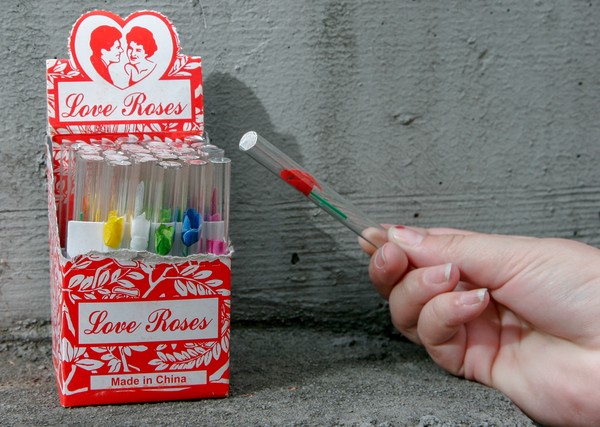
Remove the foil from the ends of the tube and extract the rose. You can discard the rose or give it to your sweetie. In my experience, sweeties do not much care for flimsy plastic roses extracted from tubes purchased at gas stations. Sweeties prefer that I discard the rose.
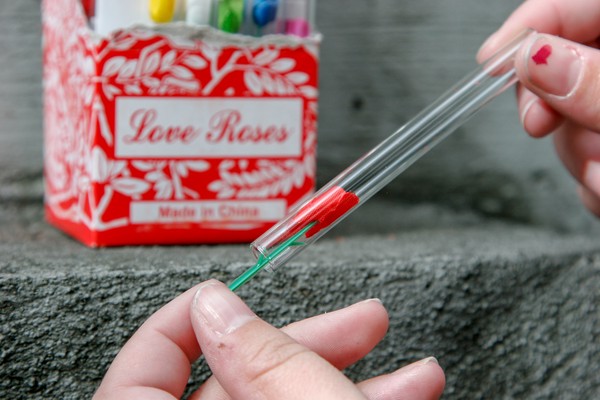
Stuff the prepared copper scouring pad into one end of the glass tube.
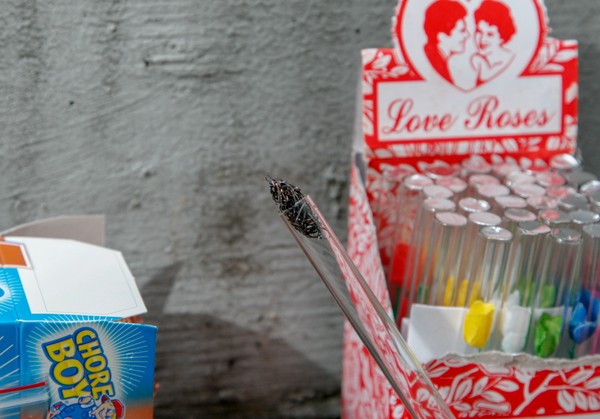
Use chopsticks or kebab skewers to pack the copper scouring pad into a tight cylinder inside the tube near one end. You should pack it tight enough that the copper pad stays firmly in place. Blow hard through one end of the tube to ensure the copper pad stays in place and that no loose copper or ash bits remain.

Place one whole coffee bean inside the tube such that it abuts the packed scouring pad.
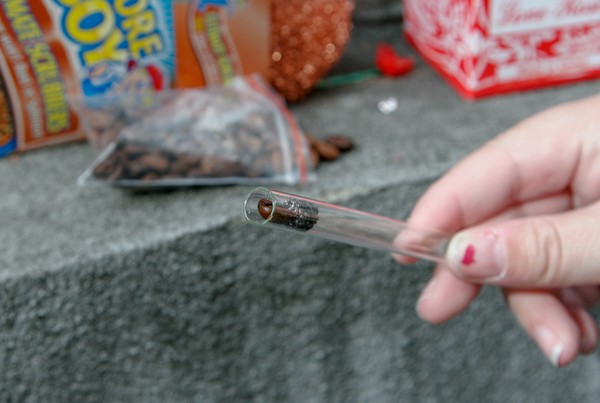
The coffee bean should sit entirely inside the glass tube. Inspect the bean’s placement to ensure it does not protrude from the tube. If it does, extract the bean and reposition the packed scouring pad with your chopstick or kebab skewer.
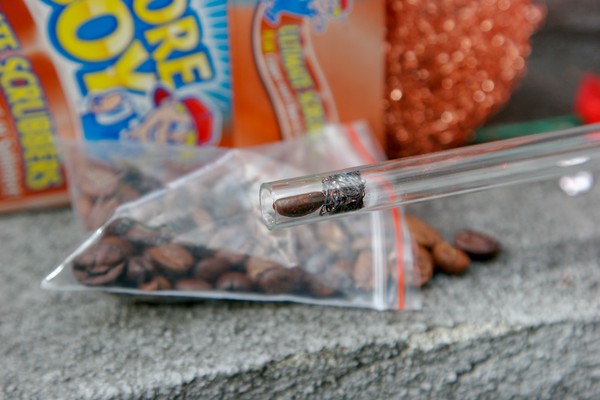
Light up the coffee bean and toke heavily. The coffee bean should melt into the scouring pad and produce white coffee vapor. Although you can no longer see the bean, you can continue to periodically apply flame to the scouring pad end of the tube to produce more coffee vapor. Repeat until the bean is consumed and no more vapor appears. Use caution not to apply the flame for too long or you might ignite the copper. Inhaling flaming copper is no fun.

The apparatus is cheap, the process is remarkably tolerant of variations in preparation, and the vaporization of the bean produces none of the characteristic bitterness of brewed coffee. It’s perfect. Even the mighty AeroPress® doesn’t come close to achieving these results. This is going to change the way you think about coffee.
They’re not quite ready yet, but I’m toying around with other improvements to the overall coffee making process. For example, it’s looking like I can dispense with the entire roasting step by firing green beans in the tube for a few extra minutes before melting them into the scouring pad. In my testing thus far, the sustained heat required for this is causing scouring pad ignition and oral blistering at unacceptable levels; however, I am persistent. I’m consulting with inner city experts on the problem and I’m convinced I can crack it.